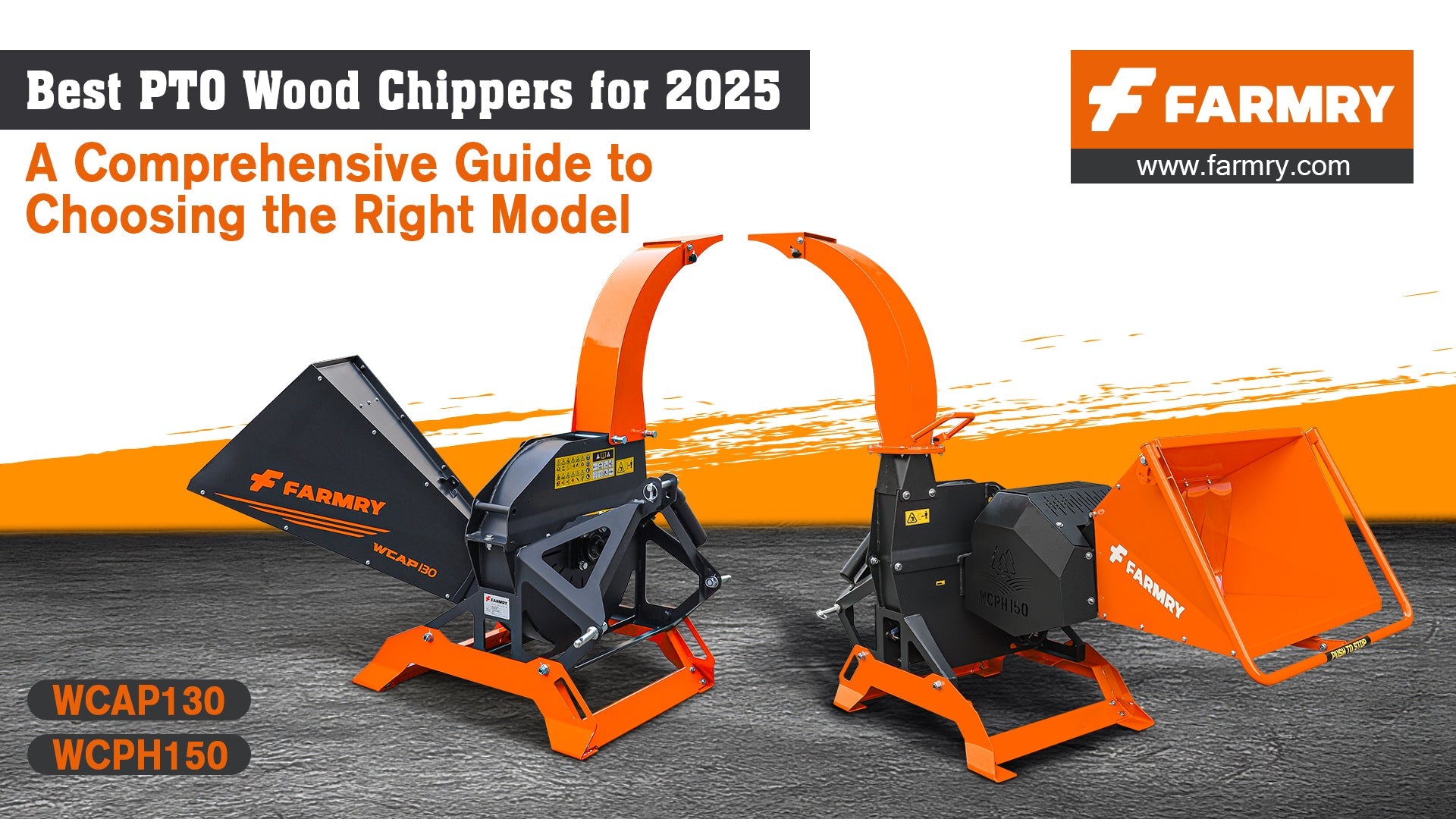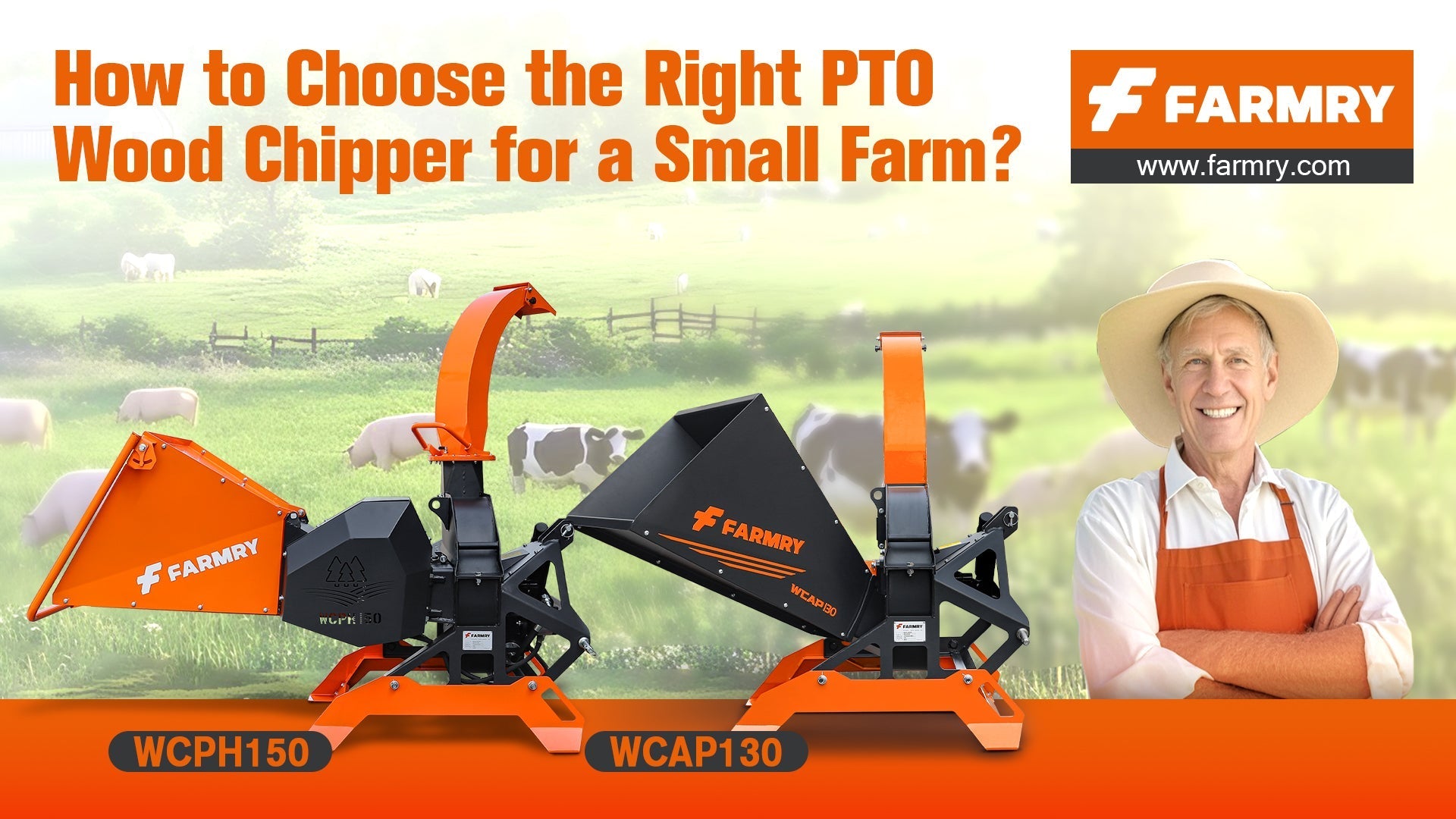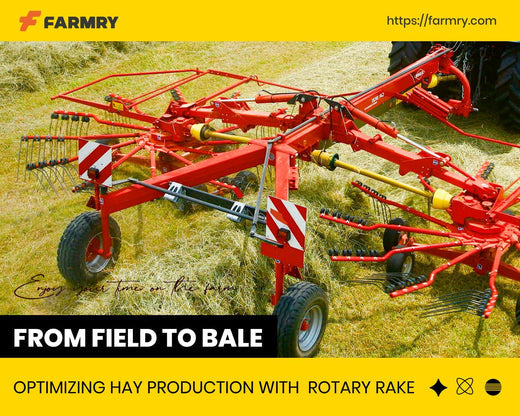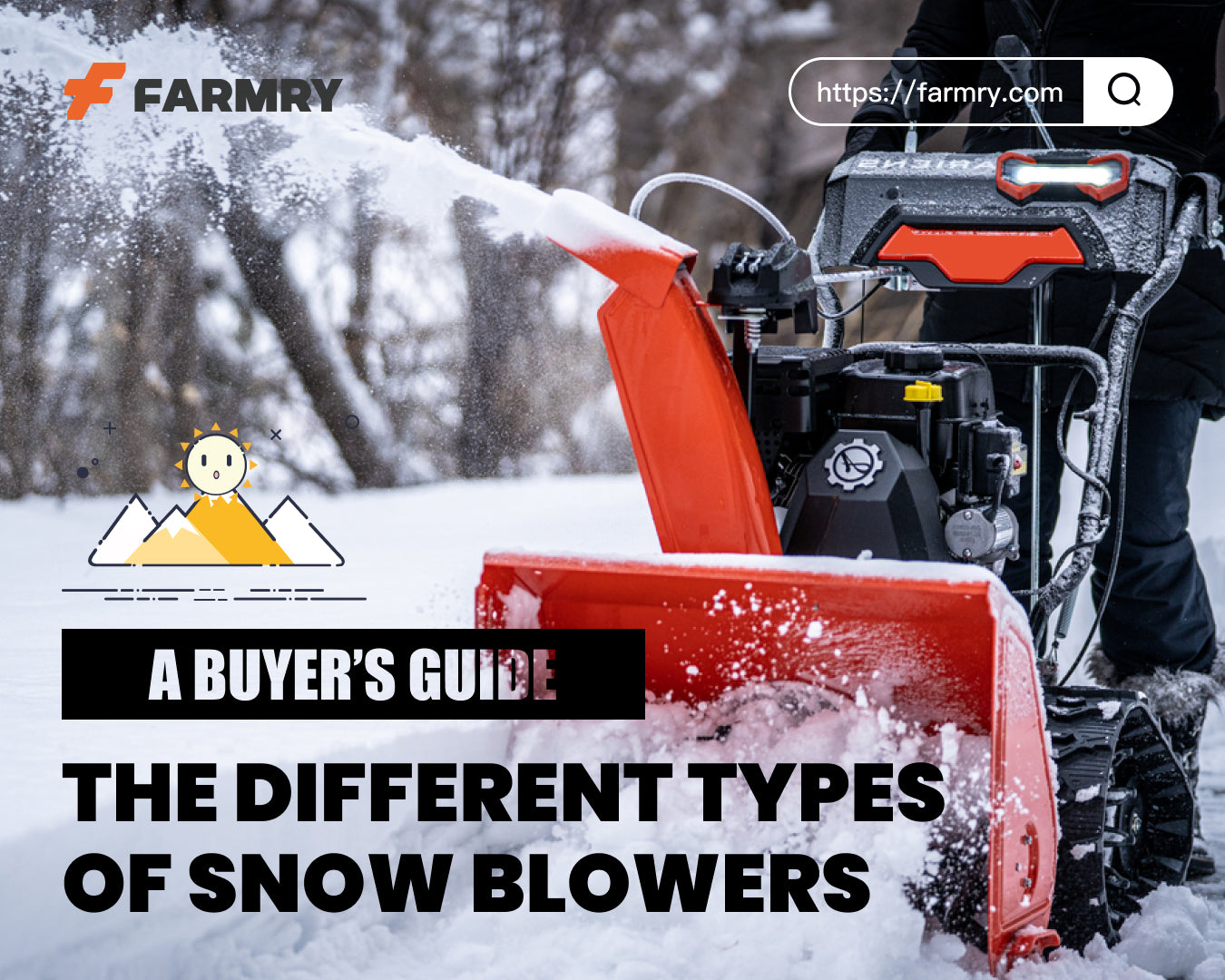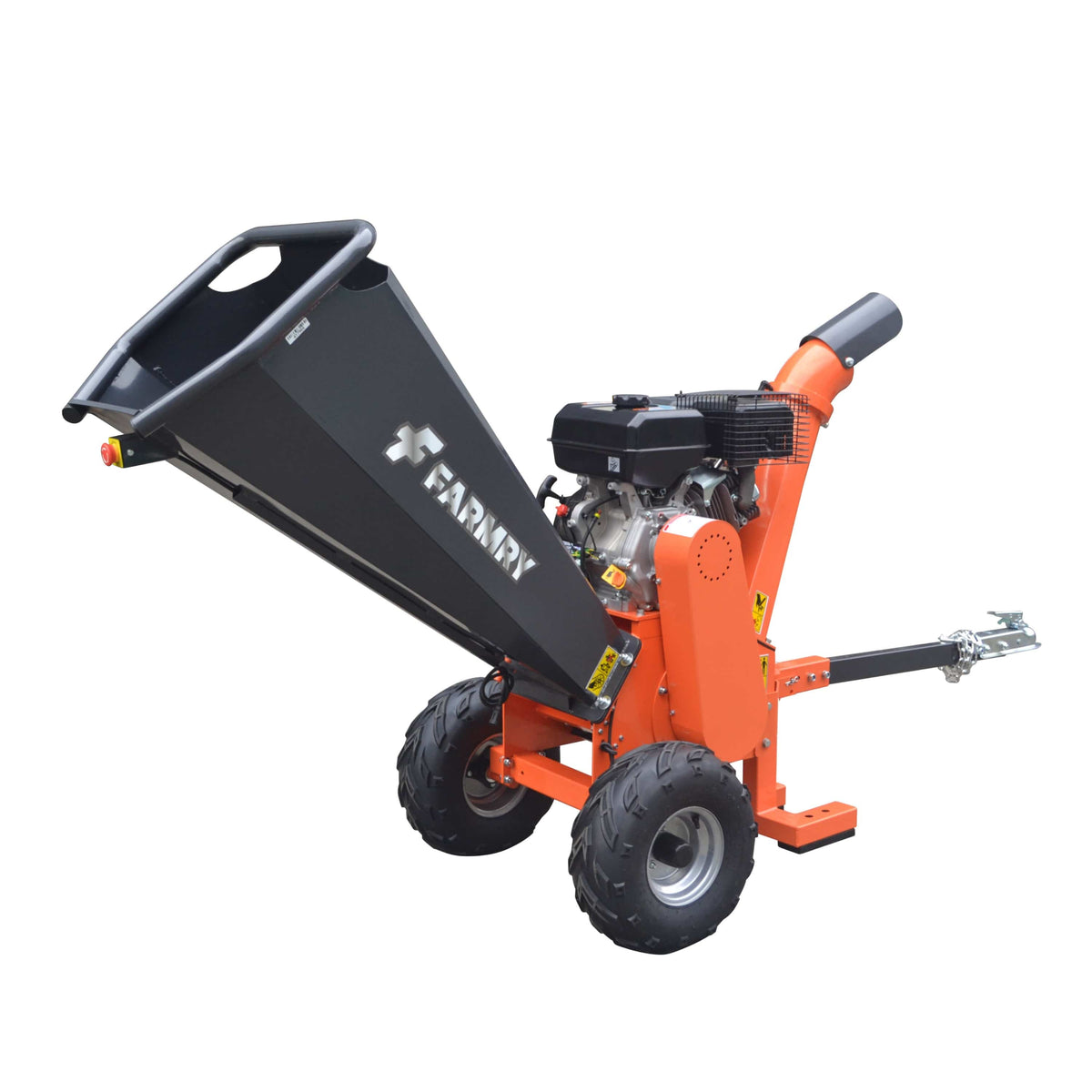PTO Tractor Wood Chipper Safety Tips: Essential Guidelines for Safe and Efficient Use
 PTO Tractor Wood Chipper Safety Tips: Essential Guidelines for Safe and Efficient Use
PTO Tractor Wood Chipper Safety Tips: Essential Guidelines for Safe and Efficient Use
If you're looking to tackle tree maintenance, clear brush, or enhance your landscaping, a PTO (Power Take-Off) tractor wood chipper can be an invaluable tool. Whether you're working on a small farm or managing a large property, wood chippers are designed to turn branches, limbs, and other woody materials into useful wood chips or mulch. However, with great power comes great responsibility. Operating a PTO tractor wood chipper requires proper care, attention, and safety precautions to ensure maximum performance and prevent accidents. In this blog, we'll dive into safety tips for using PTO tractor wood chippers, along with the features and performance considerations that can improve efficiency and longevity.
Understanding the PTO Tractor Wood Chipper
Before jumping into safety protocols, it’s crucial to understand what a PTO tractor wood chipper is and how it works. This piece of equipment is an attachment that connects to your tractor’s PTO (Power Take-Off) system, using the tractor's engine power to drive a high-speed rotor and blades that chip branches, limbs, and other debris into small wood chips. These wood chips can then be used for mulching, composting, or as a decorative element in landscaping projects.
A PTO wood chipper typically consists of several key parts:
-
Rotor: The rotating mechanism that powers the chipper’s blades.
-
Blades/Knives: These sharp components slice through wood, turning it into chips.
-
Chute: The opening where the wood chips are expelled once processed.
-
Flywheel: A component that stores energy and smooths out the power delivery to the chipper.
As powerful as this equipment can be, safety must be prioritized to prevent accidents. Let's explore some critical safety tips for using a PTO tractor wood chipper.
1. Ensure Proper Equipment Setup and Inspection
Before starting any job, it's essential to inspect the PTO tractor wood chipper thoroughly. Check for any loose bolts, missing replacement parts, or signs of wear on critical components such as the blades, rotor, and chute. Ensuring the unit is equipped with all necessary safety features like safety shields and emergency stop mechanisms can prevent accidents during operation.
Action Steps:
-
Inspect the rotor, blades, and knives for sharpness and damage.
-
Verify that all safety shields are in place.
-
Check for any loose parts that could affect the chipper’s performance.
2. Follow Manufacturer’s Instructions and Guidelines
Each wood chipper comes with a manual or set of instructions that detail the safe operation and maintenance procedures. These instructions will inform you of the proper way to handle the unit, including any specific safety protocols related to your machine's design and capacity. Following the manufacturer’s guidelines will ensure that you're using the chipper to its full potential without risking damage or injury.
Action Steps:
-
Read and understand the user manual before operation.
-
Pay attention to recommended usage parameters, such as the diameter of limbs and branches that can be safely fed into the chipper.
-
Familiarize yourself with the recommended power range (HP) for the chipper’s efficient performance.
3. Always Wear Proper Protective Gear
Operating a PTO wood chipper can expose you to various hazards, from flying debris to the noise generated by the machine’s high-speed rotor. Always wear appropriate protective gear to minimize risks. At a minimum, ensure you're wearing safety glasses, heavy-duty gloves, hearing protection, and sturdy footwear to protect yourself from potential injury.
Action Steps:
-
Wear safety goggles to protect your eyes from flying wood chips.
-
Use hearing protection to reduce noise exposure.
-
Wear gloves to protect your hands when handling the machine and materials.
-
Ensure your footwear is durable and can withstand any heavy impact.
4. Stay Clear of the Chipper’s Moving Parts
One of the most important safety tips when using a PTO wood chipper is to stay clear of its moving parts, particularly the rotor and blades. These components are powerful and can cause serious injury if you're not careful. Never attempt to adjust or remove any items from the chipper while the machine is running. Always ensure the chipper is powered down before performing any maintenance or cleaning.
Action Steps:
-
Never place your hands near the rotor, blades, or knives while the machine is running.
-
Turn off the chipper and disconnect the power before performing any adjustments.
-
Do not attempt to clear clogs or jammed material by hand—use a long stick or other tools designed for this purpose.
5. Keep the Work Area Clean and Free of Obstacles
A cluttered work area increases the risk of accidents. Ensure that the area around the PTO wood chipper is clear of any debris, tools, or other obstacles. This will not only make operation smoother but also reduce the likelihood of tripping or injuring yourself or others nearby. Additionally, be mindful of any power lines, as they can be a danger when operating large equipment like a PTO wood chipper.
Action Steps:
-
Keep the chipper's surroundings free of debris, tools, and obstructions.
-
Avoid operating near power lines or areas that may pose additional hazards.
-
Ensure that the chute area is clear to prevent clogging and overloading.
6. Be Mindful of Machine Performance and Load
Understanding the machine’s capabilities is essential for safe operation. Overloading the chipper can damage the equipment and increase the risk of a malfunction. Always feed material that fits within the chipper's specified range. If you’re working with thick branches or logs, ensure they meet the recommended diameter for efficient processing. The tractor's PTO power must match the chipper’s design, so avoid pushing the machine beyond its limits.
Action Steps:
-
Check the capacity and weight limits of the chipper and only feed material within that range.
-
Avoid overloading the chipper, as this can stress the motor and rotor.
-
Monitor the chipper’s performance during operation to ensure it is functioning efficiently.
7. Use the Chipper on Stable Ground
For maximum stability and safety, always operate the PTO tractor wood chipper on level, firm ground. Using the chipper on uneven terrain can cause instability, which may lead to accidents or equipment damage. Ensure the tractor and chipper unit are securely positioned before starting the job.
Action Steps:
-
Ensure that the tractor is parked on flat, stable ground.
-
Make sure the chipper is securely attached to the tractor's PTO before use.
-
Position the machine and tractor to avoid any tipping hazards.
8. Know the Proper Way to Transport and Store Your Chipper
When not in use, it's important to store the PTO wood chipper properly. Ensure it is kept in a dry location to prevent rust or damage to the machine's components, including the blades, knives, and rotor. When transporting the chipper, ensure it is securely fastened to prevent accidents on the road or during movement.
Action Steps:
-
Store the chipper in a dry, sheltered area to protect it from the elements.
-
When moving the chipper, ensure it is properly secured to prevent shifting or damage.
-
Periodically inspect the chipper during storage to check for wear.
9. Perform Regular Maintenance for Longevity
To ensure the safety and effectiveness of your PTO wood chipper, regular maintenance is key. This includes checking the condition of blades, rotor, and knives. If any components are worn or damaged, replace them promptly with high-quality replacement parts. A well-maintained chipper will last longer and perform better, reducing the risk of malfunctions during operation.
Action Steps:
-
Regularly inspect the blades, rotor, and knives for sharpness and wear.
-
Replace any damaged or worn-out parts promptly to maintain performance.
-
Follow the manufacturer’s recommendations for lubrication, cleaning, and other maintenance tasks.
10. Understand the Importance of Support and Warranty
Choosing a PTO tractor wood chipper with reliable customer support and warranty is essential. A product backed by a solid warranty ensures that if anything goes wrong, you're protected. Many manufacturers offer warranties on their wood chippers, and having a support team that can assist you in case of issues will make your experience smoother and more secure.
Action Steps:
-
Always choose a wood chipper from a reputable brand with good customer reviews.
-
Confirm that the product comes with a warranty covering parts and labor.
-
Ensure the company offers responsive customer support to assist with any issues.
Understanding the Tractor's PTO: The Power Behind the Wood Chipper
The Power Take-Off (PTO) system is the crucial mechanism that connects your tractor to external equipment, like a wood chipper. The PTO is responsible for transferring the tractor’s engine power to drive the machinery that’s attached to it. This is what gives your PTO wood chipper the energy it needs to operate, making it a vital component in the operation of your chipper.
In simple terms, a tractor’s PTO functions like a shaft that draws power from the tractor’s engine and transfers it to the equipment attached to the tractor, such as a wood chipper, auger, or mower. Depending on the design and configuration, there are generally three types of PTO systems in tractors: live PTO, independent PTO, and transmission PTO.
Types of PTO Systems:
-
Live PTO:
-
This system is directly powered by the tractor's engine and operates independently of the tractor’s transmission system. A live PTO allows the operator to disengage and engage the power without having to stop the tractor’s motion, which can be advantageous when using a wood chipper, as it gives greater control over the machine’s operation.
-
-
Independent PTO:
-
As the name suggests, an independent PTO operates independently of the tractor's motion. This allows you to engage and disengage the PTO without worrying about the tractor’s gear or speed. It’s ideal for operations that require precision, such as wood chipping, as it provides full control over the machine's operation regardless of the tractor's movement.
-
-
Transmission PTO:
-
In a transmission PTO system, the PTO is directly linked to the tractor’s transmission, which means that engaging or disengaging the PTO is done through the gear system. This type is less common for wood chippers because it requires the tractor to be in neutral or at a stop to engage or disengage the PTO, limiting the operational flexibility.
-
Conclusion
Operating a PTO tractor wood chipper can be an efficient and powerful way to manage wood waste and improve your property’s landscape. However, it’s essential to prioritize safety to avoid accidents and maximize the machine's lifespan. By following these essential safety tips—such as ensuring proper setup, wearing protective gear, maintaining the machine, and understanding its limitations—you can safely and effectively use your PTO wood chipper for years to come. Always remember that the key to safety is preparation, knowledge, and using the equipment according to its intended design and capacity.

